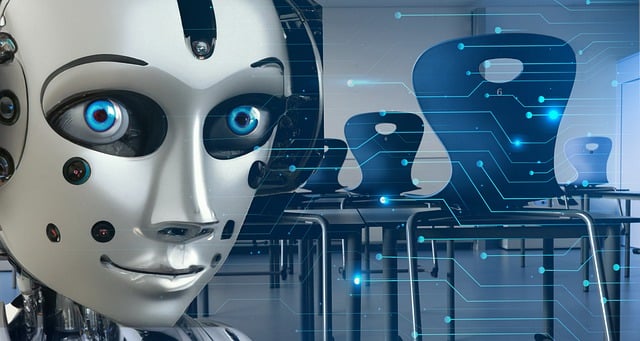Section 1: The Rise of AI Technology in the Workplace
Artificial Intelligence (AI) has been a buzzword in the tech industry for decades, but in recent years, it has become a game-changing force in the business world. AI technology has evolved from a concept in science fiction to a practical tool that is transforming how companies operate. From automating routine tasks to providing valuable insights and predictions, AI is revolutionizing the way businesses function. According to a study by PwC, AI is expected to contribute $15.7 trillion to the global economy by 2030, making it one of the most disruptive technologies of our time.
One of the key advancements that have driven the widespread adoption of AI in the workplace is the development of machine learning algorithms. These algorithms use data to learn and improve over time, making them capable of performing complex tasks and making decisions without human intervention. This has opened up a world of possibilities for businesses, allowing them to automate processes, analyze vast amounts of data, and make more accurate predictions.
Section 2: Practical Applications of AI Across Industries
The impact of AI technology can be seen across various industries, from healthcare to finance to retail. In healthcare, AI-powered systems are being used to analyze medical images and assist doctors in diagnosing diseases. This has not only improved the accuracy of diagnoses but has also reduced the time and cost associated with traditional methods. In finance, AI is being used to detect fraudulent activities, predict market trends, and automate investment decisions. This has enabled financial institutions to make more informed decisions and provide better services to their clients.
In the retail industry, AI is being used to personalize customer experiences, optimize inventory management, and improve supply chain efficiency. For example, Amazon’s AI-powered recommendation engine analyzes customer data to suggest products that are likely to be of interest, increasing sales and customer satisfaction. In addition, AI-powered robots are being used in warehouses to pick and pack orders, reducing the time and cost associated with manual labor.
Another industry that has seen a significant impact from AI technology is manufacturing. With the rise of Industry 4.0, AI-powered systems are being used to monitor and optimize production processes, leading to increased efficiency and reduced downtime. These systems can also predict equipment failures before they occur, allowing for preventive maintenance and cost savings. In addition, AI-powered robots are being used to perform tasks such as welding, painting, and assembly, freeing up human workers to focus on more complex and creative tasks.
Section 3: The Benefits and Challenges of Integrating AI into Business Operations
The integration of AI technology into business operations has brought about numerous benefits, including increased efficiency, improved decision-making, and cost savings. By automating routine tasks, AI frees up employees to focus on more high-value activities, leading to increased productivity. In addition, AI systems can analyze vast amounts of data in a fraction of the time it would take a human, providing valuable insights and predictions that can inform business strategies.
The use of AI technology has also improved decision-making in businesses. With access to real-time data and insights, managers can make more informed and data-driven decisions, reducing the risk of human error and bias. This has been particularly beneficial in industries such as finance, where accurate and timely decision-making is crucial.
However, the integration of AI into business operations also presents challenges that must be addressed. One of the main concerns is the potential displacement of human workers. As AI systems become more advanced, there is a fear that they may replace human jobs, leading to unemployment. To address this, companies must ensure that the implementation of AI is done in a way that complements human workers rather than replaces them. This could involve upskilling employees to work alongside AI systems or creating new roles that require human oversight of AI technology.
Another challenge is the ethical implications of AI. As AI systems become more advanced, there is a risk of biased decision-making, as these systems are only as unbiased as the data they are trained on. This could lead to discrimination and inequality, which must be addressed through ethical guidelines and regulations.
Section 4: Future Trends in AI Technology
The advancements in AI technology are showing no signs of slowing down, and the future looks promising for businesses looking to leverage this technology. One of the key trends that we can expect to see is the integration of AI with other emerging technologies, such as the Internet of Things (IoT) and blockchain. This will enable businesses to create more interconnected and intelligent systems, leading to further efficiency and cost savings.
Another trend is the development of explainable AI, which will allow businesses to understand how AI systems make decisions. This will be crucial in industries such as healthcare and finance, where transparency and accountability are essential.
In addition, we can expect to see more AI-powered virtual assistants and chatbots being used in customer service and sales. These systems will be able to handle more complex queries and provide a more personalized experience for customers.
Conclusion
The impact of AI technology on the business landscape cannot be ignored. From automating routine tasks to providing valuable insights, AI is transforming the way businesses operate and opening up new opportunities for growth. While there are challenges that must be addressed, the benefits of integrating AI into business operations far outweigh the risks. As we look to the future, it is clear that AI will continue to play a significant role in driving efficiency, enhancing decision-making, and creating new opportunities for growth in the workplace.

